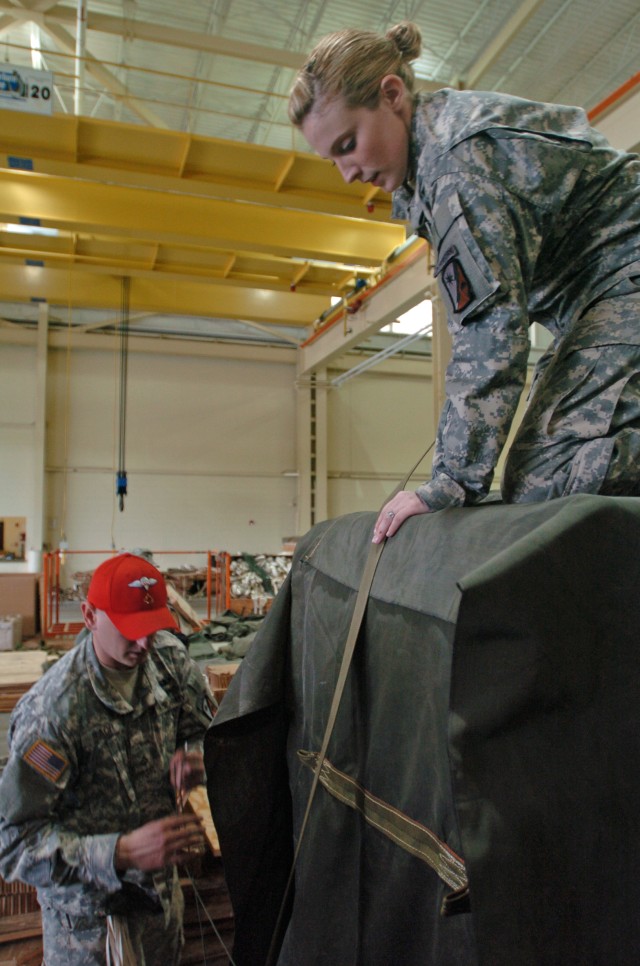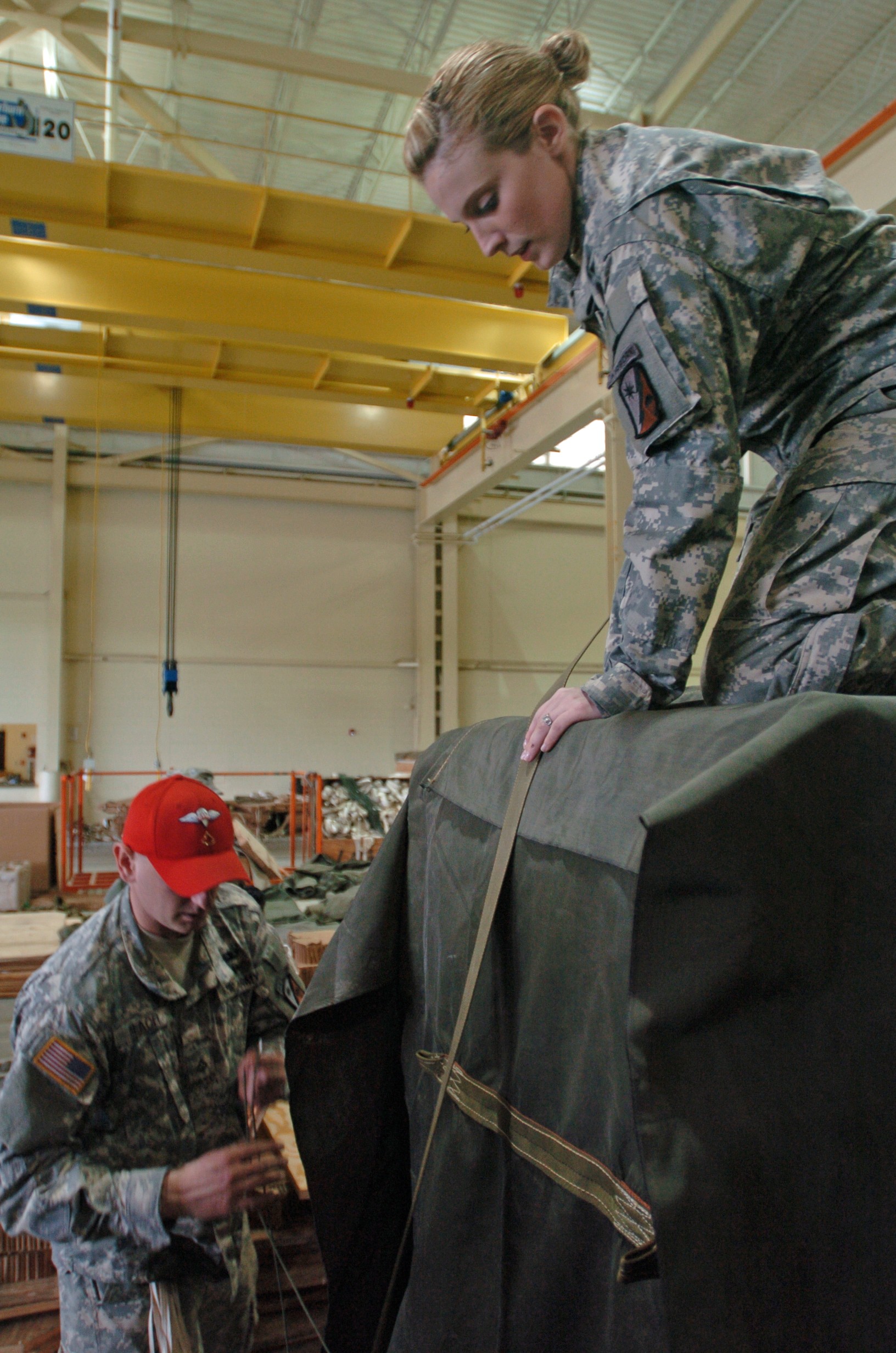
FORT BRAGG, N.C.- Most press coverage of the humanitarian assistance and disaster relief effort in the aftermath the earthquake in Haiti last week has focused on 82nd Airborne Soldiers, but few know that this is a combined joint effort involving the United States Agency for International Development and includes Marines, Air Force, Navy, Coast Guard, Department of Defense civilians, equipment, vehicles and supplies.
Private companies have also joined in the efforts. Col. Shawn Mateer, Chief of Staff for XVIII Airborne Corps and Fort Bragg, said that National Beverage Company and Fiji Water Company have donated thousands of gallons of water to be sent and distributed among the Haitian people.
Fiji Water spokesperson, Amber Eyerly, was contacted by Darryl Larry, chief of supply,
Fort Bragg Directorate of Logistics after hearing about a media advisory released by Fiji announcing that the company would love to donate bottled water but that the infrastructure just wasn't there (in Haiti) to accommodate it.
Larry called the company and provided instruction in order to get 150 pallets (136,000 liters) of water to Haiti to sustain the earthquake victims.
Finding the route to properly place donated material in the right hands is not just a challenge for private companies wanting to help.
"Our biggest challenge is to make sure the right supplies get to the right destination at the right time to distribute to the Haitian population," Mateer said.
The logistical problem solving has fallen on Bob Franks, Fort Bragg's director of logistics. Franks, a retired colonel with 35 years of experience in the military, said he is impressed with all the donations and support from the local community to help in any way possible.
"The Soldiers and Airmen that have been working 24/7 since the president gave the orders for this mission are very professional and enthralled in the work of getting the mission accomplished," Franks said.
Franks also said that most of the equipment, vehicles and personnel will arrive by air landings. In other words, the C-130s will actually have to find room to land. While air delivery is being used to deliver necessary supplies, air landings are being used for equipment, vehicles and personnel.
"With the supplies of food and water, they are being containerized and will be air-delivered strategically throughout the borders of Port au Prince," Franks said.
Franks said the pallets will contain about two-thirds water and one-third food rations.
Capt. Beth Riorda, commander of 11th Quartermaster Company, who is in charge of making sure the supplies are distributed and prepared for the aircrafts en route, explained that the difference between air landing and air delivery is that air deliveries are palletized and dropped in strategic locations, then distributed from those points.
Whereas the air landings containing personnel and heavy vehicles have to actually be grounded and then unloaded.
Riorda said she is extremely proud of the Soldiers who have been working around the clock since the earthquake to make sure that operations to deliver supplies and personnel go smoothly.
The hub of activity is the staging area at Pope Air Force Base, N.C. Soldiers and Airmen can be seen working together at the staging area preparing supplies for the outgoing humanitarian mission. Air Force Maj. Edward Hogan, 3rd Aerial Port Squad Operations office helps oversee the actual placement of supplies and personnel. He said this is what the Airmen train for.
"We are ready for these types of missions at all times. Though the volume and engineering of the mission may change, we have the physical capability and ability to take on any mission, anytime," said Hogan.
The Haiti mission has required many hours and dedication of all the joint services.
With the expected deployment of over 3,000 Soldiers and Airmen in the coming weeks, Lt. Gen. Frank Helmick, Commanding General of the XVIII Airborne Corps and Fort Bragg, said how important it is to acknowledge that it is not just the Soldiers that make this post work and that make this JTF-Haiti support operation happen.
"We are blessed by a tremendous civilian staff in both the Garrison Command and the Mission Support Element which augment the military," said Helmick.
"Our Air Force brothers at Pope are remarkable... and honestly, we could not do this without all of them," Helmick said. "We work very closely and while we wear different uniforms, we are one team."

Social Sharing